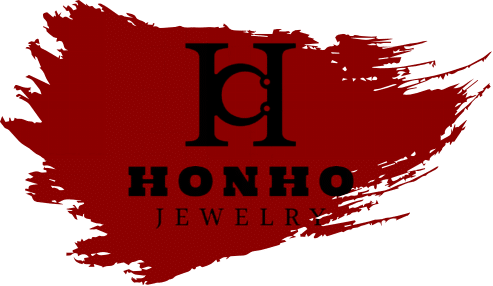Top Jewelry Production Companies: Complete Guide 2025

We define the 2025 landscape for buyers who need vetted partners that match growth stage and values.
Our guide maps reliable pathways to partner discovery in the United States and abroad. We explain how to shortlist by capability, compliance, and cost-to-quality ratios.
We show how to translate creative vision into manufacturable designs with clear specifications, CAD readiness, and a predictable sampling process. We compare supplier profiles by core strengths—casting, stone setting, plating—and how those affect lead times and margins.
We also clarify which certifications signal operational maturity and ethical compliance. Finally, we preview platforms, coalitions, and brands to benchmark standards and accelerate sourcing.
Read on to balance speed-to-market with durability, finish, and scalability when launching new collections or expanding wholesale channels.
Key Takeaways
- Shortlist partners by capability, compliance, and cost-to-quality ratios.
- Use CAD-ready specs and a clear sampling plan to reduce risk.
- Match supplier strengths—casting, setting, plating—to your category focus.
- Look for certifications that prove ethical and operational maturity.
- Leverage curated platforms and coalitions to find reliable manufacturers.
- Balance speed-to-market with finish, durability, and scalability.
Understanding the 2025 landscape of jewelry production companies in the United States
We see a market that mixes steady growth with faster concept-to-shelf cycles driven by technology and local clusters. The U.S. market was valued at USD 78.40 billion in 2024 and is on track to reach USD 97.62 billion by 2030 at a 3.72% CAGR. This growth changes how brands plan inventory and launch cadence.
Market dynamics and buyer intent
American households spend about USD 434 yearly on adornment, with New York metro higher. Customers split between DTC and wholesale. They evaluate value, authenticity, and speed. Marketing must highlight transparent sourcing and finish quality to convert interest into purchases.
Fine vs. fashion: supply chains and turnaround
Fine jewelry relies on precious metals and stones and longer lead times. Fashion jewelry uses brass or stainless and benefits from rapid runs and lower MOQs.
Automation, CAD/CAM, and 3D printing reduce sampling friction. In new york city, proximity to the Diamond District compresses lead times and accelerates approvals. We recommend platform discovery, coalition vetting, and targeted audits before scaling orders.
How to evaluate a jewelry manufacturer: quality, capacity, and ethical standards
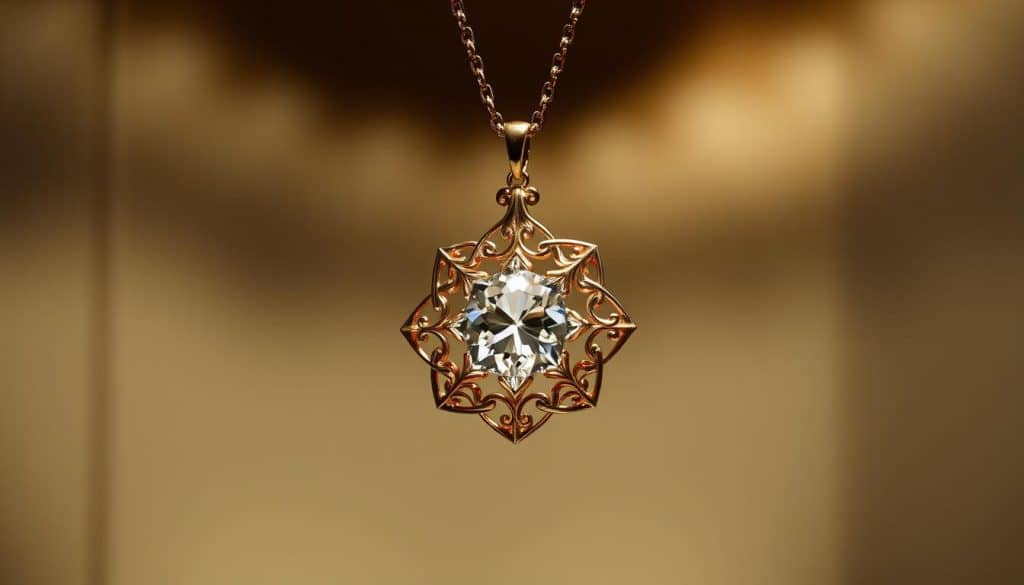
Choosing the right partner starts with clear metrics for craft, capacity, and compliance. We set concise criteria so procurement moves from opinion to data. This reduces rework and protects margin.
Craftsmanship, CAD, casting, plating, and gemstones
Inspect workmanship. Check stone security, even prongs, clean castings, and precise solder joints. Validate plating thickness with XRF tests.
Verify CAD fluency. Fast prototyping and dimensional accuracy cut sampling cycles and lower remake rates. Ask for first-article reports.
Confirm in-house gemstone handling, cutting, and matching tolerances for consistent color and fit.
Lead times, MOQs, and scalability for wholesale and DTC
Define MOQ tiers for pilots versus wholesale drops. Review scalable workflows and surge plans to protect lead times during spikes.
Track KPIs: on-time delivery, reject rate, remake rate, and plating endurance. Use these to manage partners by data, not anecdotes.
Certifications that matter
Require evidence of RJC, SEDEX, or ISO systems. The Plumb Club mandates RJC for members; Essentials Jewelry lists ISO 9001 and SEDEX credentials plus SGS‑verified recycled metals.
Jewelry production companies
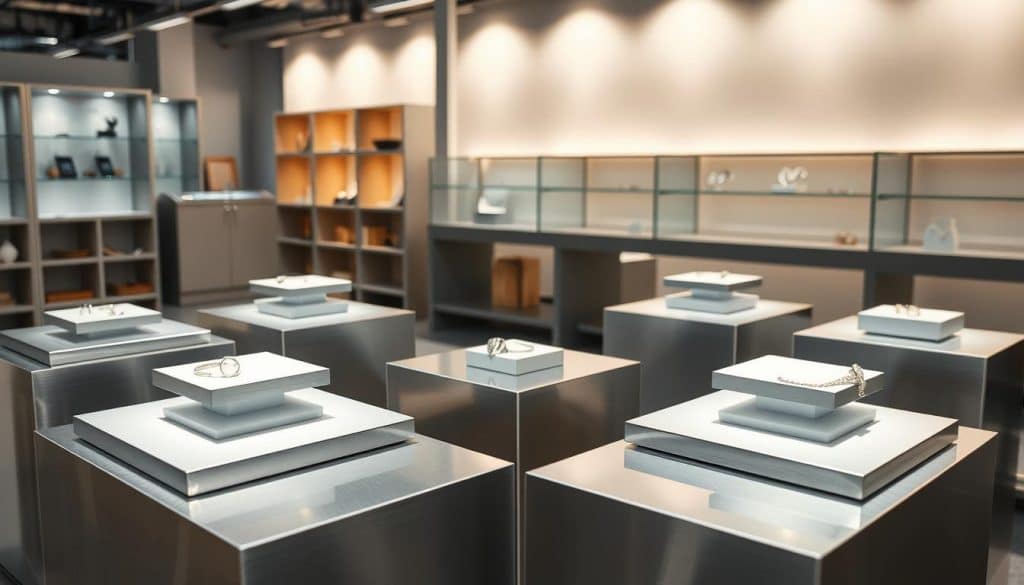
Sourcing has moved online: curated platforms and industry coalitions speed discovery and reduce risk.
Maker’s Row connects designers with vetted U.S. manufacturers. We use it to shorten shortlist time by matching capability, customization, and quality assurance.
Platforms and coalitions: Maker’s Row and The Plumb Club (TPC-365)
The Plumb Club enforces a Code of Responsibility and requires Responsible Jewelry Council (RJC) certification for members. That raises supplier reputation and lowers compliance risk for retailers and brands.
TPC-365 adds virtual sales meetings, always-on inventory viewing, and curated education. These tools help merchants make smarter selection decisions and tighten merchandising plans.
Iconic American brands with manufacturing credibility
We profile Tiffany & Co., Stuller, and James Avery for process rigor, material standards, and dependable after-sales support. Their practices set expectations across the world market.
To build a practical roster, we recommend one primary company, one contingency, and specialty partners for unique techniques. Shortlist by metal systems, stone setting, and finishing to cut revisions.
| Source | Strength | Why it matters |
|---|---|---|
| Maker’s Row | Vetted U.S. factories, capability matching | Faster shortlists and clearer capability fit |
| The Plumb Club / TPC-365 | RJC requirement, virtual inventory, education | Higher compliance, real-time selection tools |
| Tiffany & Co., Stuller, James Avery | Process rigor, material standards, support | Benchmarks for reputation, quality, and service |
New York City spotlight: manufacturing partners built for speed, scale, and detail

New York’s manufacturing cluster compresses weeks of development into days for brands that need fast, precise turnaround.
The Diamond District alone houses over 2,600 businesses on a single block, creating same‑day access to stones, settings, and hands‑on fittings.
Why NYC matters: Diamond District density, trend velocity, and experiential retail
Proximity speeds approvals and reduces logistics risk. Designers meet bench hands, source stones, and book showroom time in hours.
Essentials Jewelry for NYC brands: scale, skill, and systems
Essentials Jewelry runs German casting, laser, and plating lines and employs 850+ craftsmen, 40+ CAD pros, and 100+ QA specialists.
Their floor output tops 6,000 pieces daily and supports 3–7 day made‑to‑order runs while keeping micro‑pavé, prong symmetry, and polish consistent.
Omnichannel and tech integration: prototyping to AR
They sync with Shopify, WooCommerce, and Magento. Rapid prototyping, resin samples, and real‑time renders cut remake risk.
AR try‑on and automated order ingestion lift conversion and lower returns. Sustainability—RJC, SEDEX, ISO, SGS‑verified recycled metals, solar power, and wastewater treatment—strengthens marketing claims.
- Compressed development cycles enable same‑day consultations.
- Production boards and QC gates protect attention to fine detail.
- Omnichannel flows connect designs, logistics, and retail experience.
Sustainability and responsibility: choosing partners aligned with RJC and modern ethics

Brands must pair technical specs with transparent supply chains to protect reputation. We expect suppliers to prove ethical practices through verifiable systems. This protects margin and market access.
The Plumb Club’s Code and RJC mandate
The Plumb Club has required Responsible Jewelry Council certification since 2019. Members also sign the Code of Responsibility each year. This creates a baseline for documented due diligence.
Factory standards that move the needle
Essentials Jewelry sets a practical example. They use SGS‑verified recycled silver and gold, run a 120kW solar array producing 186,782 kWh annually, and maintain advanced wastewater treatment.
| Metric | What to request | Why it matters |
|---|---|---|
| Certifications | RJC, ISO 9001/14001/45001, SEDEX 4‑Pillar | Measurable systems for quality, safety, and ethics |
| Materials | SGS verification of recycled metals | Traceable origin and reduced footprint |
| Energy & Waste | Solar generation data; wastewater controls | Lower emissions and community protection |
We expect transparency on gemstones, including origin, lab‑grown options, and chain‑of‑custody. Ask for audit reports, emissions data, and metal origin statements during onboarding.
- Use specific third‑party verifications to avoid greenwashing.
- Request quarterly reviews with manufacturers to validate claims and set new targets.
Global manufacturing options: fast fashion to demi‑fine and fine jewelry production
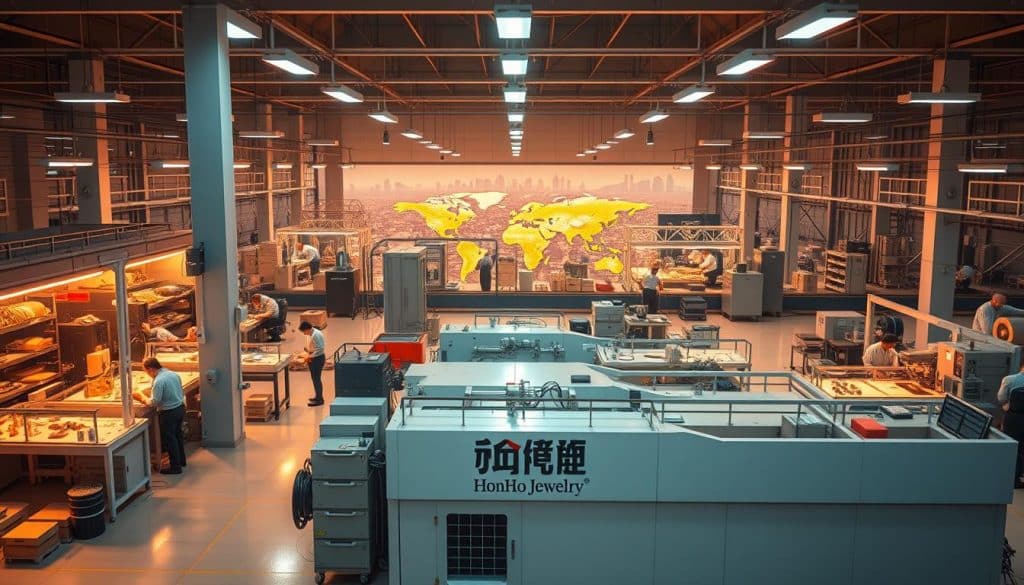
A clear sourcing map helps brands choose a path from rapid fashion runs to handcrafted fine pieces. We assess lead time, MOQ flexibility, and finishing to match category needs.
Essentials Jewelry supports lab‑grown and natural gemstones, brass and 925 silver lines, and 3–7 day made‑to‑order windows. They run two high‑output factories and supply brands stocked at Nordstrom and Macy’s.
Capabilities to request:
- Material specs: 925 silver, vermeil thickness standards, brass with premium plating.
- Stone options: lab‑grown gemstones for scale and natural stones for premium assortments.
- Factory checks: casting fidelity, repeatable stone‑setting, and plating abrasion tests.
Operational safeguards matter. Dual‑sourcing chains and findings protects seasonal timelines. Pilot lots validate designs, then rolling POs align to sell‑through.
Governance includes inspection levels, packaging specs, tariffs planning, and transit testing to reduce returns and ensure on‑time wholesale deliveries worldwide.
Manufacturer spotlight: Dongguan HonHo Jewelry (China) — OEM/ODM for custom designs

For teams testing new SKUs, Dongguan HonHo offers low MOQ paths and CAD‑backed workflows. We profile their capabilities for brands that need scalable, cost-aware runs.
Core services and how we work with them
Specializations: stainless steel, brass, 925 silver, and gold vermeil. They support both fashion jewelry and accessible fine jewelry looks.
MOQ: 50–100 pcs, which lets brands validate SKUs with limited risk.
- OEM/ODM and custom design with CAD files and sample iterations.
- Pattern development, rapid sampling, and clear milestone calendars to speed approvals.
- Finishing options and QC checks focused on plating durability and part fit.
| Feature | Benefit | What we recommend |
|---|---|---|
| CAD & samples | Fewer remake cycles | Provide technical packets early |
| MOQ 50–100 | Low‑risk SKU testing | Start with pilot SKUs, then scale |
| Finishing & QC | Consistent plating and fit | Include pre‑shipment inspections |
Communication: Plan cadence around time zones and holiday calendars. This keeps development and delivery on schedule.
Contact for sourcing: — brief projects and request targeted quotations with spec sheets.
Conclusion
This conclusion gives a practical checklist to match manufacturing processes and certifications to your brand goals. We recap how to shortlist partners across the United States and abroad by aligning core processes, capacity, and verified credentials.
Prioritize New York access and Diamond District proximity for faster sampling, richer CAD iterations, and better outcomes for customers. Require RJC, ISO, and SEDEX evidence to protect reputation and meet retailer standards. Validate diamonds, gemstones, plating thickness, and solder points with data‑driven QC and documented tolerances.
Start with pilots. Use rolling orders, ERP and AR integrations, and clear KPIs. That approach lets brands engage leading manufacturers and manufacturers USA partners with confident briefs and a roadmap to scale.
FAQ
What defines a top jewelry manufacturing partner in the United States in 2025?
We look for proven craftsmanship, advanced CAD/CAM systems, in‑house casting and plating, consistent quality control, and transparent supply chains. Capacity and lead times must match buyer intent — whether wholesale or direct‑to‑consumer — and the partner should hold relevant certifications like Responsible Jewelry Council (RJC) membership or ISO standards. Reputation, factory presence, and technical skills such as stone setting and chain fabrication are also critical.
How do we compare fine versus fashion manufacturing capabilities?
Fine makers emphasize precious metals, tight tolerances, certified diamonds and gemstones, and full traceability. Fashion or fast‑fashion producers focus on cost-effective materials like brass, gold vermeil, and stainless steel, faster turnaround, and lower MOQs. We evaluate equipment, material sourcing, finishing, and QA protocols to match the product tier and brand positioning.
What minimums and lead times should we expect for wholesale orders?
MOQs vary by process and region. For fine pieces MOQs often run higher, while vermeil and fashion runs can start at 50–100 pcs. Lead times depend on complexity: simple production may take 2–6 weeks; prototyping and custom gemstone work can extend to 8–12 weeks. We recommend confirming tooling, plating cycles, and gemstone procurement before committing schedules.
Which certifications and ethical standards matter for brands and buyers?
RJC certification is a market standard for responsible sourcing and chain‑of‑custody. ISO quality and environmental certifications, SEDEX for labor and ethical audits, and verified supplier traceability for diamonds and colored gemstones strengthen credibility. We prioritize partners that publish sustainability reports and use recycled metals or renewable energy where feasible.
Why is New York City still a strategic manufacturing and sourcing hub?
NYC offers dense supplier networks like the Diamond District, rapid trend feedback, and a high concentration of CAD specialists and skilled bench jewelers. That velocity reduces prototyping cycles and improves omnichannel readiness for retail and e‑commerce. Local partners often provide flexible runs and fast turnarounds for seasonal collections.
How do we assess a partner’s technical capabilities such as CAD, casting, and plating?
Ask for process documentation and sample pieces. Verify CAD output, rapid‑prototyping tools, and in‑house casting methods. Inspect plating thickness, adhesion tests, and finishes. Request photo and video of production stages, and review quality metrics like first‑pass yield, return rates, and inspection reports.
What role do platforms like Maker’s Row and The Plumb Club play for brands?
These platforms connect brands with vetted manufacturers, provide sourcing tools, and facilitate introductions to certified partners. The Plumb Club also enforces codes of responsibility among members, helping streamline compliance and RJC alignment for fine and demi‑fine lines.
Can U.S. manufacturers scale for both DTC and large wholesale programs?
Many U.S. firms maintain flexible lines that support low MOQs for DTC and scalable runs for wholesale. Key indicators are the number of skilled staff, CAD capacity, secondary finishing stations, and experienced supply‑chain managers. We examine past production volumes and clients to validate scalability.
How important is sustainability in selecting a manufacturer today?
Extremely important. Buyers and end customers expect recycled metals, responsible gemstone sourcing, reduced carbon footprint, and proper wastewater treatment. Partners aligned with RJC and ISO environmental practices reduce reputational risk and appeal to conscious consumers.
What should we verify when evaluating overseas OEM/ODM partners?
Confirm manufacturing specializations, MOQs, lead times, and export compliance. Check references, factory audits, and certificates. Ensure clear communication on tooling ownership, IP protections, and testing standards for plating, alloys, and stones before production begins.
Which American brands are known for strong manufacturing credibility?
Brands and suppliers like Tiffany & Co., Stuller, and James Avery have long histories of in‑house manufacturing or tightly managed supplier networks. They exemplify high quality, reliable supply chains, and strong service models useful as benchmarks for other brands.
What technologies improve speed and quality for modern makers?
CAD/CAM, 3D printing for rapid prototypes, automated casting lines, laser welding, and digital inventory/e‑commerce integrations are key. AR try‑on and data sync between production and retail systems speed time‑to‑market and improve conversion for omnichannel brands.
How do we handle gemstone sourcing and certifications for diamonds and colored stones?
Work with suppliers who provide grading and provenance documentation. For diamonds, insist on GIA or IGI grading and clear chain‑of‑custody statements. For colored gems, require lab reports where applicable and verify origins for compliance with conflict‑free standards.
What are realistic cost drivers to plan for in 2025 manufacturing budgets?
Factors include metal prices, stone availability, labor skill levels, tooling and CAD fees, plating cycles, and compliance costs for certifications. Freight, tariffs, and sustainability investments such as recycled metals or solar energy at factories also affect margins.
How can brands reduce risk when onboarding a new manufacturer?
Start with a pilot order, require sample approvals, define QC checkpoints, and include clear terms on timelines and defects. Use third‑party inspections and retain rights to audit factories. Build a multi‑supplier strategy to avoid single‑source exposure.
Which manufacturing materials and finishes are trending for 2025 collections?
Lab‑grown diamonds, gold vermeil, 925 silver, and anti‑tarnish plating are rising. Mixed‑metal chains, sustainable alloys, and high‑precision micro‑pavé techniques are popular for both demi‑fine and fine ranges, driven by consumer demand for quality and ethics.
How do we verify factory claims about recycled metals or solar energy usage?
Request third‑party certifications, energy audits, and purchase receipts that trace metal origins. Factory tours, virtual or in‑person, plus independent environmental audits help verify sustainability claims and ISO compliance.
share this recipe:
Still hungry? Here’s more
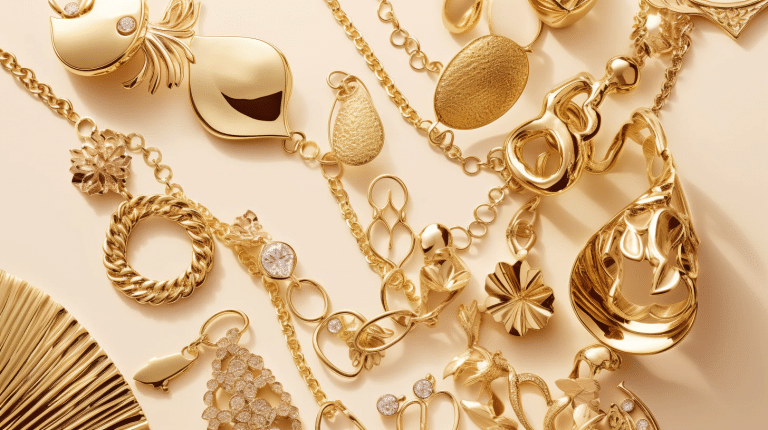
Factory Jewelry Direct Guide Benefits How It Saves You Money
Understanding Factory Jewelry Direct What “factory jewelry direct” really means When we say factory jewelry

Gold Filled vs Vermeil Guide Differences Durability and Value
What Is Gold Filled Jewelry? Gold filled jewelry is my go-to recommendation when someone wants

How Much for a Gold Necklace 2026 Price Guide and Tips
Understanding Gold Purity and Karats When people ask “how much for a gold necklace?”, the
Ready to Design Your Own Jewelry?
Have an idea in mind or need help shaping it? From sketches to finished pieces, our custom jewelry team will work with you step-by-step to bring your vision to life.
